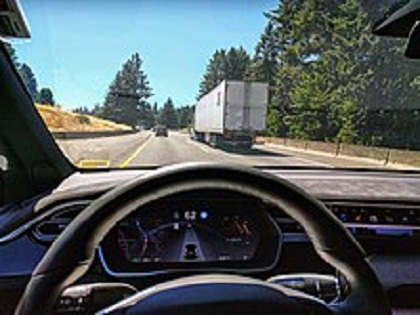
ADAS, which stands for “Advanced Driver Assistance Systems,” is an umbrella term that refers to the many different technological advancements and added luxuries that have become standard in contemporary automobiles. Over the past few decades, driving has changed for a lot of people. This is because a lot of interesting new technologies have been made to make driving safer and more comfortable. If you are in the market for a new car, the fast-paced and ever-evolving world of ADAS technologies can feel a little bit bewildering. How many of these cutting-edge features are absolutely necessary for you to have? You might be surprised at how quickly a feature that you once considered to be the stuff of science fiction becomes a part of the driving experience you have every day. It might not be as far off as you think for autonomous driving, also known as driverless cars, to make its debut on public roads and highways. According to projections made by the world’s most successful automobile manufacturers, ADAS features connected to autonomous driving will almost certainly become standard in vehicles within the next few years. By the year 2025, about 85% of all vehicles made on a global scale will have some sort of automated driving feature.
To understand how Autonomous ADAS will affect your driving, it can be helpful to understand the different levels of autonomy in different vehicles. There are a variety of levels of vehicle autonomy.
Various Levels of Vehicle Autonomy:
Level 0:
The vast majority of cars on the road today are classified as “Level 0,” meaning they are controlled manually. Although there may be systems in place to assist the driver, the “dynamic driving task” is ultimately the driver’s responsibility. One example is an emergency braking system, which is not considered automation because it does not directly control the movement of the vehicle.
Level 1:
Features that are standard on many newer cars or available as extras fall under the “Basic.” category. There are warning lights for front and rear collisions, blind spot detectors, lane departure alarms, and so on.
Level 2:
We enter ADAS at the “Driver assistance” level. The vehicle can control both steering and acceleration/deceleration. Since a person is still in the driver’s seat, this level of automation is not fully autonomous driving. In Level 2 vehicles, you’ll find safety features like automatic emergency braking, adaptive cruise control, lane keep assist, a distance control feature, an automatic speed limiter, and more.
Level 3:
“Partial automation.” The technological gap between Levels 2 and 3 is large, but the difference for drivers is small. Level 3 self-driving cars can “sense” their surroundings and make decisions based on what they find, like whether or not to pass a slower car. Level 3 vehicles, however, are still dependent on human intervention. That is to say, a Level 3 driver must always be vigilant and prepared to take over if the system fails to complete a task.
Level 4:
“Automation with conditions.” The biggest difference between Level 3 and Level 4 automation is that Level 4 vehicles can fix problems on the road or in their own systems. Basically, most of the driving of these vehicles can be done with minimal input from the driver. The driver of a level 4 vehicle, on the other hand, can still override the system by hand.
Level 5:
“High automation” cars are different because they can go into “chauffeur mode,” which is a self-driving mode that does away with the need for a driver. But Level 5 cars can only use chauffeur mode in certain places until the law and infrastructure catch up with the changes in car technology. The majority of the time, this refers to urban areas with low speed limits. However, this is expected to change in the near future, and there will soon be more level 5 capable vehicles on the market.
Level 6:
“Full automation.” The need for a human driver is completely eliminated in fully autonomous, self-driving vehicles. Such cars have just started hitting the market, but they’re expected to be successful and popular within the next couple of years.
Let’s take a look at the major ADAS trends that are sure to make headlines in the near future now that we’ve got a more in-depth understanding of the varying levels of autonomy present in the cars we see on the roads and the technological advancements we can expect to see in the coming years.
Predictions for Advanced Driver Assistance Systems
#1 5G connectivity
5G technology integration is a major ADAS trend to watch. Many newer models are equipped with smart, wireless “Over The Air” transmitters and receivers that can update sensors and hardware remotely.
Incorporating 5G over the next few years will make cars more secure by making the technologies on board less vulnerable to interference. 5G enables technologies like Automated Predictive Maintenance Systems, smart devices, and cloud-based applications to foster a new, data-focused approach to vehicle maintenance. With these new ADAS, you won’t need to wait for something catastrophic to happen to get your car fixed. The technology should alert you to any looming problems.
#2 Using Multiple Sensors
There will be a lot of buzz about automotive sensors and their role in ADAS developments this year. In order to keep you and your passengers safe, most newer vehicles with ADAS capabilities are equipped with a wide variety of sensors to constantly monitor the area immediately surrounding the car.
Your car’s many sensors serve many purposes. Consider dedicated LIDAR (light detection and ranging) sensors, IR (infrared) sensors for ACC (adaptive cruise control), etc.
New advanced driver assistance systems (ADAS) “Sensor Fusion” are being implemented this year by a wide range of automakers, and they aim to improve your car’s ability to communicate with its various sensors in order to give you better, more predictive warnings.
#3 Automotive Human-Machine Interface Design
We’ve all grown accustomed to the touchscreens in our cars, but the year 2023 promises even more improvement in this area. Even when the car is parked, we can anticipate increasingly natural interactions with the driver. In the coming months and years, more and more sophisticated human-machine interface (HMI) technologies will be incorporated into automotive operating systems.
By eliminating the need for drivers to take their hands off the wheel, touch-free HMI systems help keep drivers’ attention on the road and reduce the likelihood of accidents.
#4 Integrated Vision
Automotive vision systems are expected to become increasingly popular by 2023. Embedded Vision technologies are more than just an essential tool for identifying potential road hazards; they are also critical for collecting critical data and providing on-the-road warnings such as lane drift. These ever-changing systems collect the data required to support an increasing number of advanced features, such as automatic parallel parking and traffic sign recognition.
In-built vision systems add a new level of safety to your cockpit by serving as driver monitoring systems. Indicating and alerting the driver if they start to become distracted.
You can see that we have already made great strides toward the world of tomorrow by adopting ADAS technologies such as these. If you need your ADAS system recalibrated, please give us a call at 915-595-4444 or visit one of our conveniently located service centers, both in Texas and New Mexico. We provide the highest quality of advanced ADAS calibration to make your driving safer.
